Comprehensive Guide to 140cm Wakeboard and Bindings
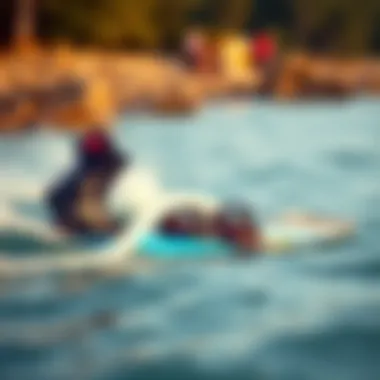
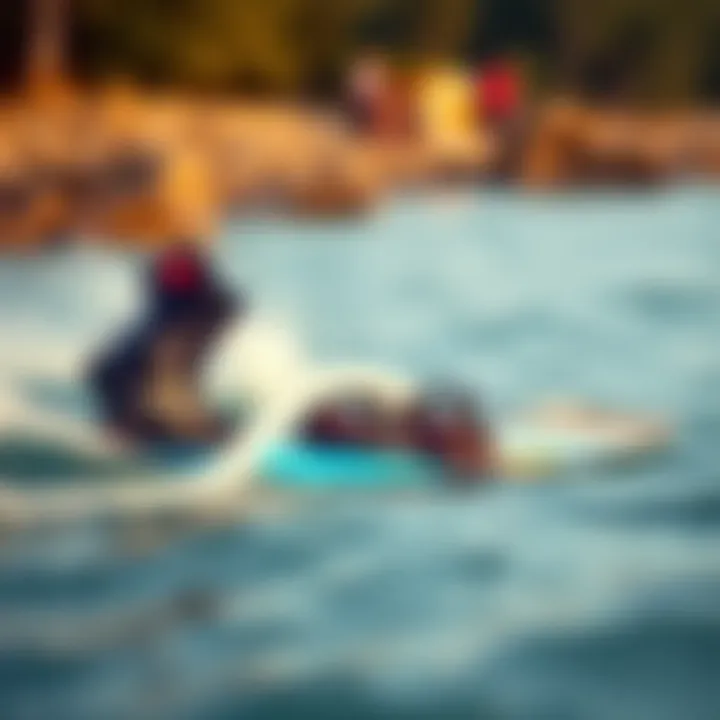
Intro
When it comes to wakeboarding, most riders can agree that selecting the right board and bindings can significantly influence performance on the water. One of the most popular sizes is the 140cm wakeboard, a versatile choice for various skill levels. Whether you’re a greenhorn learning the ropes or a seasoned pro looking to nail that next trick, understanding how this piece of gear operates is key.
This guide will not only discuss design and performance but also delve into aspects like user feedback and maintenance recommendations. From bindings to cleaning your gear, we've got you covered.
Gear Essentials
Top Picks for Watersports Equipment
The right wakeboard paired with the correct bindings can set the stage for an enjoyable experience on the lake. Here are some top picks currently making waves in the market:
- Hyperlite State 140: Known for its adaptable design, this board has a mellow rocker that caters to those new to the sport while still providing enough pop for experienced riders.
- Ronix One Blackout 140: This board is slightly on the stiffer side, offering incredible edge control and versatile handling that seasoned riders truly appreciate.
- Liquid Force Trip 140: A well-rounded option that combines stability and performance, ideal for those who dabble in both wakeboarding and tricks.
Choosing bindings is as critical as picking your board. You need a pair that cup your feet securely while allowing for the necessary flex. Notable mentions include:
- Follow Raptor Bindings: With a plush interior and excellent ankle support, these are tailored to keep you comfortable during long sessions.
- O'Neill Psycho Tech Bindings: They feature an easy-entry design that appeals to beginners while still delivering performance that pro riders can rely on.
Maintenance and Care Tips for Gear
Once you've got your gear sorted, keeping it in top shape requires some diligence. Here are a few essential maintenance tips:
- Rinse After Use: Saltwater and chlorinated water can corrode your equipment. Rinse your board and bindings with fresh water after each use to prevent buildup.
- Check for Damage: Regularly inspect your board for dings or cracks. A small defect can turn into a major problem if left unattended.
- Use a Board Bag: Protecting your wakeboard with a padded bag during transport can save it from potential scrapes and scratches.
"Regular maintenance ensures longevity and enhances performance. Don’t wait until it’s too late to take care of your gear."
Staying on top of your gear's condition can greatly influence your riding experience. The right setup and care can mean the difference between a fantastic day on the water and a frustrating one.
Techniques and Tips
Beginner Tips for Each Watersport
As a newbie, it’s easy to feel overwhelmed. Here are some practical tips:
- Stand Correctly: Position your feet shoulder-width apart, knees slightly bent, and lean back a little. It’s all about balance.
- Handle the Pull: When the boat takes off, hold on tight and lean back to counter the pull.
- Try to Fall Safely: If you're going down, let go of the rope and try to fall away from the boat to avoid any injuries.
Advanced Techniques for Skill Enhancement
For those with more experience, stepping up your game may involve refining your technique:
- Experiment with Edging: The way you edge can change your ride significantly. Experiment with varying your edge pressure to see how it affects your performance.
- Trick Progression: Start with basic tricks like the ollie and gradually progress to more complex ones like spins or flips, adding small variations as you become more confident.
Improving your wakeboarding skills is a journey. The key is practice, patience, and sometimes a little guidance from more experienced riders.
Access expert community insights and tips at reddit.com/r/Wakeboarding. You'll find a treasure trove of advice, tutorials, and personal experiences that can elevate your understanding.
Embracing both the technical and social aspects of wakeboarding will not only contribute to your growth as a rider but also deepen your connection to the sport.
Prolusion to Wakeboarding
Wakeboarding stands out as a thrilling water sport, combining elements of surfing, skiing, and snowboarding into an exhilarating experience. Understanding the core of wakeboarding is essential not just for new enthusiasts but also for seasoned riders keen on refining their skills and gear selection. In our pursuit of excellence in this activity, we will dive deep into the essentials of the 140cm wakeboard and why it's becoming a popular choice among both novices and skilled riders alike.
Understanding Wakeboarding
At its essence, wakeboarding involves riding a board while being towed behind a boat. The rider gains momentum from the boat's speed, carving through the water like a hot knife through butter. Differing from traditional surfing, wakeboarding allows for a greater range of tricks and maneuvers, thanks to the stability offered by the board and the harnessing of the boat's pull.
It’s important to note that the choice of the wakeboard, specifically one with a length of 140cm, caters to a specific style and rider weight range. This board length typically suits riders weighing between 120 to 200 pounds, balancing control and maneuverability effectively. A solid grasp of wakeboarding fundamentals can set the groundwork for further skills development.
Here are some key elements to consider:
- Board Length and Weight: The 140cm length provides a sweet spot for intermediate riders looking to improve their skills without the full commitment of longer boards, which can be a handful for those still mastering the basics.
- Boat Speed: The speed at which the boat travels is crucial; most riders find their groove at around 20-25 mph, creating the perfect conditions for catching air and performing tricks.
- Stance: Positioning on the board, whether goofy or regular, greatly influences a rider's comfort and performance.
The Appeal of Wakeboarding
The allure of wakeboarding lies in its mix of adrenaline-pumping action and the sheer joy of being on water. For many, it serves not only as a sport but also as a social activity, fostering community among riders. The picturesque settings, from serene lakes to vibrant canals, amplify the experience.
A few reasons why wakeboarding captivates so many include:
- Versatile Skill Levels: Whether you're just starting out or looking to master intricate tricks, wakeboarding accommodates everyone. Funnels for progression exist at every turn.
- Equipment Innovation: The sports industry continually enhances wakeboard designs, leading to improved technology in materials and binding mechanisms, which significantly boost performance and comfort.
- Environmental Connection: Riders often find peace and a deep sense of connection to nature while gliding through tranquil waters, making it a great escape from daily life.
"Wakeboarding isn’t merely a hobby; it’s a gateway to exhilarating experiences and unforgettable moments on the water."

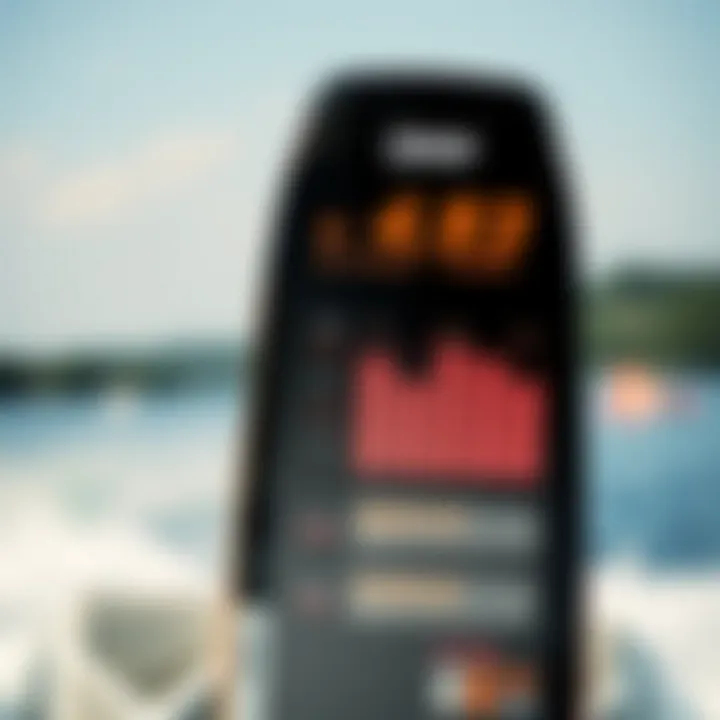
In summary, wakeboarding serves not only as a captivating challenge but also as a powerful way to commune with nature while riding the waves. This article aims to further elaborate on the specifics surrounding the 140cm wakeboard and its bindings, offering insights into the nuances of gear choice, performance, and overall maintenance, ensuring that both rising stars and seasoned pros can soak up every drop of knowledge.
The 140cm Wakeboard Profile
When it comes to selecting a wakeboard, the profile plays a crucial role. The 140cm wakeboard boasts unique design aspects that cater to diverse rider preferences. This section unpacks the specifics of the 140cm wakeboard profile, giving an overview of its target audience and essential design features that enhance performance.
Target Audience
This particular wakeboard is tailored primarily for riders who are at a beginner to intermediate skill level. However, it's not just about the skill; it also fits those who prefer a more balanced ride in a variety of water conditions. Individuals exploring this size often hail from different backgrounds, whether they are skimming or jumping off the gentle waves. Additionally, it appeals to lighter riders, typically those under 180 pounds.
Design Features
The design of a 140cm wakeboard is more than skin deep. It's about how its shape, contour, and materials synergize to deliver an impressive riding experience.
Shape and Contour
The shape and contour of the 140cm wakeboard are not arbitrary; they are carefully crafted to maximize performance. Typically, this size features a hybrid shape that allows for excellent edge hold while simultaneously providing lift off the water. Its wider nose can catch the water effectively, while a tapering tail enhances maneuverability.
Key characteristics include:
- Increased Smoothness: This shape helps maintain a smooth ride, especially under choppy conditions.
- Versatile Use: Ideal for tricks, jumps, and cruising. Riders can adopt different styles without feeling constrained.
A unique aspect of the contour is certainly its rocker design. With a continuous rocker, the board's curve allows for smoother transitions between land and water, making it a more forgiving option for inexperienced riders.
However, this design may not favor advanced riders seeking sharper maneuvering, but it serves a specific purpose; balancing stability and agility for its primary audience.
Material and Construction
When discussing the construction, the 140cm wakeboard often utilizes a composite material that balances durability and flexibility. Popular options include fiberglass and carbon fiber, each chosen for specific traits.
A key characteristic here is the lightweight nature of these materials, allowing riders to carry their boards easily without compromising performance. The construction is robust, able to withstand the pounding of jumps and grinds while maintaining vital performance elements.
Among the advantages of innovative materials is enhanced responsiveness. Riders can expect a more connected feel with the board, enabling precise movements—ideal for carving and executing tricks.
Yet, a downside exists. While lightweight materials offer performance gains, they may not hold up as well against extreme wear, especially for more aggressive riders. As a result, regular inspections become essential to ensure the board is safe and functional.
In summary, the 140cm wakeboard profile's target audience and design features dovetail perfectly. Its tailored dimensions and materials provide a solid ground for both novice and intermediate riders, while still opening the door for intriguing possibilities as they enhance their skills on the water.
Bindings: Key Considerations
Bindings might seem secondary in terms of wakeboarding gear, but their importance is far-reaching. They are your connection to the wakeboard, serving not only to secure your feet but also impacting your performance on the water. Choosing the right bindings can make a world of difference in comfort, control, and overall enjoyment of your ride. This section goes into the nitty-gritty aspects of bindings, looking closely at types, adjustment mechanisms, and compatibility with the 140cm wakeboard.
Types of Bindings
Closed Toe vs. Open Toe
When it comes to bindings, the choice between closed toe and open toe can feel overwhelming. Each type has distinct characteristics. Closed toe bindings are designed for a snug fit, enveloping the entire foot. This snugness can translate into more control, as there's less wiggle room, allowing for more precision during jumps and turns. In contrast, open toe bindings provide a roomier fit, accommodating a wider range of foot sizes. This flexibility can be beneficial for users who may swap boards among friends or family.
The unique feature of closed toe bindings lies in their design, which can result in a better energy transfer. When you carve or jump, the entire foot is engaged more effectively. However, a downside is that they may lead to discomfort if the fit isn't perfect, especially for those with wider feet.
On the other hand, open toe bindings shine in terms of comfort, especially during longer sessions. They allow for expansion and can prevent cramping, making them a popular choice for novice riders or those who prioritize comfort over performance. In sum, if you’re gunning for precision, closed toe could be your best bet. For someone who values comfort or has varying foot sizes, open toe may be the way to go.
Adjustment Mechanisms
Adjustment mechanisms in bindings can often feel like a hidden gem, yet they can significantly enhance user experience. The hallmark of a great adjustment mechanism is simplicity and effectiveness. Many bindings now adopt a quick-release system, allowing riders to easily gear up and change settings on the fly. This is not only time-saving but also boosts the overall convenience when you are out on the water.
With effective adjustment mechanisms, riders can personalize the tension and fit around their feet. A tighter binding may offer more responsiveness, while a looser fit can provide more comfort but at the potential cost of control. Thus, a unique feature here is the adaptability to your riding style and comfort preference.
However, an area to watch out for is the complexity of certain systems. While premium models may offer fancy features, they can sometimes be tricky to set up or adjust mid-session, leading to frustrations just when you want to ride.
Compatibility with Wakeboards
Compatibility with wakeboards is crucial when choosing bindings. Not all bindings fit all boards, and mismatches can lead to poor performance or discomfort. The typical wakeboard comes with a standard mounting configuration, offering compatibility with most bindings, but there are exceptions. It's wise to double-check the specifications from manufacturers to ensure your chosen bindings will fit snugly on your wakeboard.
Before making the final choice, consider the following factors:
- Mounting Systems: Different boards might use various mounting systems, so ensure they align with your bindings.
- Foot Size: Some bindings are better suited to certain foot sizes or shapes. Be sure to try them on, if possible, or look for recommendations based on foot dimensions.
- Riding Style: Match your bindings to your intended riding style. Are you a leisure rider, or do you push the envelope with tricks? Your style influences what you’ll need.
Final thought: In wakeboarding, bindings are as crucial as the board itself. Selecting the right type and ensuring compatibility will keep you riding smooth and safe. Don't underestimate the importance of this connection, as it’s what keeps you attached to the thrill on the water.
Performance Metrics
Performance metrics are a cornerstone in understanding how well a 140cm wakeboard serves its purpose on the water. They provide insight into key factors affecting rider experience, making them essential for anyone looking to get the most out of their wakeboarding activities. From beginners to seasoned pros, grasping these metrics can significantly influence the choice of equipment and riding techniques.

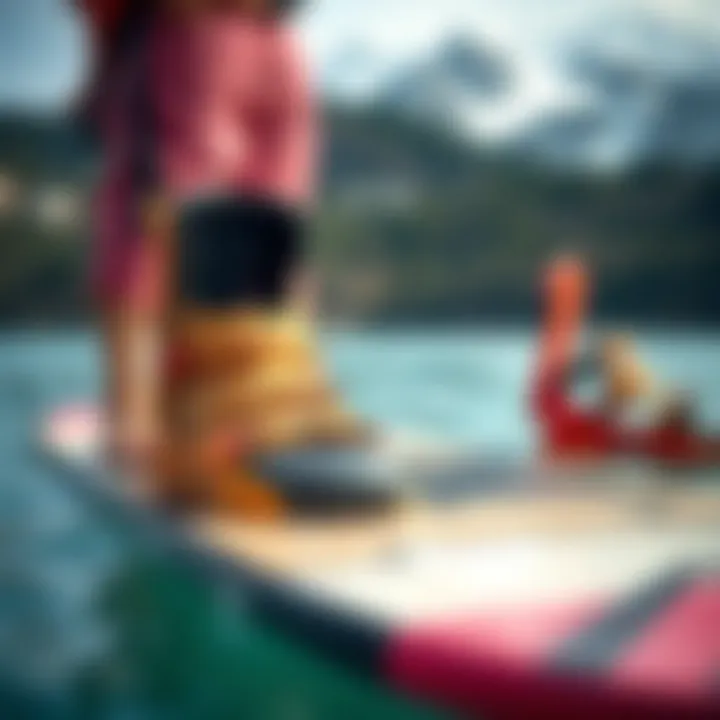
Both speed and agility play crucial roles in how a wakeboard performs during various maneuvers. The way a board interacts with the water can enhance or hinder a rider's ability to carve turns, execute tricks, or maintain speed. Each of these components can be closely analyzed to ensure that riders select the gear that best fits their style and skill level.
Speed and Agility
Speed is often the name of the game in wakeboarding. Aboard a 140cm wakeboard, the speed attained can lead to exhilarating ride experiences as it allows riders to propel themselves into jumps and perform tricks smoothly. Speed is influenced by several factors:
- Design of the Board: A board's shape can either prompt greater drag or allow for smoother glides over the water. Riders often find that boards with narrower profiles tend to cut through the waves more efficiently.
- Rider Weight: Heavier riders may experience more drag, which can affect overall speed. That’s why board selection based on weight is so vital – a fit-for-purpose board can aid in achieving better speed.
- Water Conditions: Whether cruising on glassy water or battling choppy waves, the state of the water can greatly influence a rider's velocity.
Agility comes into play as a rider maneuvers their board during tricks, turns, and other actions. Here are the aspects affecting agility:
- Board Length: At 140cm, this board length strikes a balance between being long enough for speed yet short enough to aid in quick transitions.
- Shape and Flexibility: A wakeboard designed with a more flexible construction can allow for faster reactions during sudden turns or jumps.
- Rider's Skill: No matter how advanced the board is, a rider's personal skill set is pivotal in determining how agile they can be on the water.
A performance-focused wakeboard like the 140cm model enhances both speed and agility, yet it requires practice to fully leverage these characteristics. Riders looking to elevate their skills often find taking time to understand these measurements makes a difference between a good day on the water and a great one.
Stability and Control
Stability and control are two sides of the same coin regarding wakeboarding. This aspect ensures that riders feel confident and secure while executing various moves. A stable board can prevent unwanted slips and ensure that riders maintain better alignment with the wake.
Factors that influence stability and control include:
- Width of the Board: A wider board often provides more surface area, which can enhance stability, particularly for beginners learning the ropes.
- Construction Materials: Boards made with composite materials often deliver better stiffness and durability, contributing to overall control during rides.
- Fin Configuration: The type and arrangement of fins can either stabilize the board or allow for sharper turns. A board with a five-fin setup, for instance, often gives a rider more grip on the water.
User Feedback and Reviews
User feedback and reviews play a vital role in understanding the practical implications of using a 140cm wakeboard with bindings. They serve as the collective voice of those who have ventured out into the water, testing performance, comfort, and overall usability. As potential buyers sift through options, reviews act like compass points, helping them navigate the often rough waters of product selection.
The importance of user opinions lies in their authenticity. These voices highlight real-life experiences, shedding light on how a wakeboard performs in various conditions, from flat lakes to choppy waters. The insights and practical tips gathered from seasoned riders and novices alike can enhance understanding of what to expect.
Comparison of Popular Models
User Ratings
User ratings provide a clear snapshot of overall satisfaction and performance fairness of different wakeboard models, specifically the 140cm variants. A highly rated product—often garnering four to five stars—indicates that users are generally satisfied with their experience. In this context, ratings often come to the rescue when deciding among multiple offerings.
One of the key characteristics of user ratings is their ability to break down user sentiments into quantifiable data, making it easier to identify which boards stand the test of time. For instance, a board that consistently receives praise for its stability and maneuverability among reviewers signals its effectiveness in real-world applications. This information is particularly valuable when considering longevity and investment value. However, a potential drawback is that ratings can be swayed by recent trends or temporary promotional campaigns, necessitating caution when interpreting them.
Common Compliments
Common compliments within user reviews often center around critical features such as comfort, responsiveness, and versatility. The feedback sheds light on specific characteristics—like how intuitive bindings accommodate varying foot sizes, which can be a significant boon for families or rental shops catering to diverse clientele.
Ultimately, these compliments contribute significantly to validating the claims brands make about their products. One unique feature is the emphasis on comfort in reviews—many riders note that well-designed bindings not only enhance performance but also minimize fatigue over long periods on the water. That said, while the positive feedback is valuable, it’s essential for buyers to be aware of the occasional disparity between individual experiences and broader performance metrics.
Challenges and Limitations
Despite the wealth of information user reviews provide, they come with inherent challenges and limitations. One notable concern is the potential for bias; a handful of enthusiastic users might skew the overall image of a wakeboard, especially if their experience differs significantly from the average. Conversely, negative reviews can sometimes exaggerate flaws, leading prospective buyers to dismiss potentially deserving models.
Another limitation is the difficulty in translating personal experiences to universal advice. What works wonderfully for one rider might not resonate with another due to differences in weight, skill level, and personal preference. Furthermore, collecting user feedback on newer models can take time. Consequently, newer boards may lack sufficient data for potential buyers to evaluate effectively.
"Live and let ride. Your experiences can paint a clearer picture than product specifications ever could."
Maintenance and Care
Proper maintenance and care of your wakeboard and bindings ensure they perform at their best while extending their lifespan. Much like any sporting gear, neglecting these essential components can lead to diminished performance and increased risk of accidents. Keeping things in shipshape not only preserves your investment but also enhances your overall riding experience.
Cleaning Your Wakeboard
Cleaning your 140cm wakeboard is crucial for maintaining its performance. Water, grime, and sand can accumulate on the surface, affecting its glide and maneuverability. Here are some easy steps to keep your board looking sharp and functioning well:
- Rinse After Each Use: After each ride, the first step is a good rinse. Freshwater will help eliminate residue from salt or chlorine, which can cause long-term damage.
- Use a Soft Cloth: A microfiber cloth is ideal for wiping down the board. This prevents scratches while getting rid of dirt and debris.
- Deep Cleaning: Once a month, consider a more thorough cleaning. This involves washing your board with mild soap, rinsing, and drying it properly.
- Avoid Harsh Chemicals: Strong detergents can degrade the board’s material. Opt for gentle solutions to retain the integrity of your wakeboard.
The bottom line is that a clean wakeboard not only looks good but also feels good on the water. It allows you to glide smoothly, and who wouldn’t want that?
Inspecting Bindings for Wear
Bindings play a pivotal role in your overall wakeboarding experience. They connect you to the board, and in a way, they are the lifeline during your ride. Regular inspections of your bindings are essential to ensure safety and comfort. Here’s what to look out for:
- Visual Checks: Look for any visible cracks or fraying in the straps. Even a small fray can compromise your safety when you’re flying off a jump or doing tricks.
- Adjustment Mechanisms: Check to see if the adjustment settings move smoothly. If they are stiff or jammed, they may need lubrication or replacement.
- Padding Integrity: The padding should provide both comfort and support. Over time, this padding can wear down. If it feels flat, it might be time to replace those bindings.
- Screws and Bolts: Regularly check screws and bolts for rust or loosening. Loose bindings can lead to injuries, and nobody wants that.
"A thorough check of your bindings can save you from a world of trouble on the water. Better safe than sorry!"
In essence, maintaining your wakeboard and bindings is not only about preserving your gear but also about ensuring your safety and enhancing your performance on the water. By committing to regular maintenance and care, you set yourself up for many successful rides ahead. For comprehensive tips and guidelines on wakeboarding gear, you may find resources at Wikipedia or Britannica.
Safety Protocols
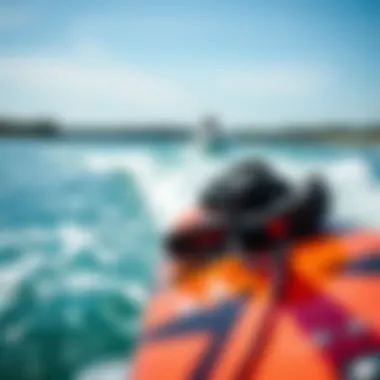
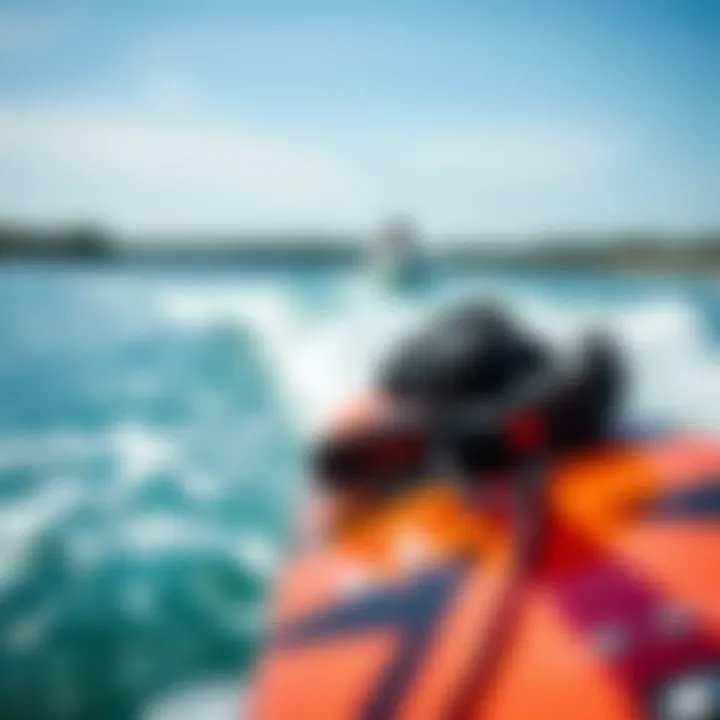
Understanding and adhering to safety protocols is crucial in wakeboarding, a sport that brings both excitement and risk. Prioritizing safety ensures that enthusiasts can enjoy their time on the water without unnecessary hazards, particularly when using a 140cm wakeboard. This section discusses the essential safety measures that every rider should integrate into their routine, promoting well-being and reducing the likelihood of accidents.
Understanding Risks
Wakeboarding can be thrilling which makes it easy to overlook certain dangers. Factors like changing weather, water conditions, or lack of experience can lead to unexpected challenges. One key risk stems from the impact of falling, especially at high speeds. The water's surface can feel as hard as concrete upon impact, and without proper precautions, even minor falls can result in injuries.
Additionally, collisions with obstacles or other riders pose significant dangers. Being aware of your surroundings and maintaining a safe distance from others is vital. Awareness also extends to understanding the limits of the equipment being used, including the board and bindings.
To mitigate these risks, consider the following:
- Know the water conditions: Be mindful of current, wave height, and visibility.
- Maintain a safe distance: Give enough space between yourself and others.
- Practice falls: Learning how to fall correctly can minimize injuries if you take a tumble.
"In every sport, risks are present—but knowing them and preparing accordingly can make a world of difference."
Essential Safety Gear
Choosing the right safety gear is as important as understanding the risks. The two most notable pieces are helmets and life jackets. Each serves a distinct purpose, enhancing safety while allowing riders to focus on their skills.
Helmets
When it comes to helmets, many wakeboarders may often overlook them for fashion or comfort reasons. However, a sturdy helmet is fundamental for safeguarding the head against impacts. The key characteristic of helmets is their ability to absorb shock, which can significantly reduce the severity of head injuries. Opting for a helmet that fits snugly yet comfortably is essential.
Most helmets designed for wakeboarding feature a lightweight yet durable construction that provides both protection and freedom of movement. One advantage is the ability to wear headphones in some models, allowing riders to enjoy their favorite music while practicing. However, be mindful that while personal music might enhance your experience, it can also hinder your ability to hear important sounds around you.
Life Jackets
Following helmets, life jackets emerge as another critical piece of safety gear. Unlike traditional buoyancy aids, life jackets are designed to ensure that individuals remain afloat no matter their skill level. The best life jackets boast a snug fit and allow for a full range of motion, which is crucial for wakeboarding maneuvers. They typically come in brightly colored materials for visibility, helping fellow boaters spot you on the water.
A unique feature of modern life jackets is the incorporation of additional padding and flotation compartments, offering better support in water. However, while they're effective, wearing a life jacket can feel bulky at times, which may distract from the ride. Yet, a well-fitting jacket will balance comfort with security, allowing riders to make the most of their time on the board.
In summary, investing in quality helmets and life jackets will not only enhance your safety but also elevate your entire wakeboarding experience. Engaging in the sport with these safety measures in place can be the difference between a fantastic day on the water and an unsafe situation.
Enhancing Your Wakeboarding Experience
Enhancing the overall wakeboarding experience isn't merely about the tricks you can pull off. It's woven into every aspect of the sport--the choice of location, skill development, and proper equipment. Getting to grips with these areas can greatly magnify not only how much joy you find on the water but also how quickly you can advance your abilities.
Choosing the Right Location
Selecting the ideal site for wakeboarding does wonders for your session. It’s not just about the water's surface; it’s about the entire atmosphere. Here are some aspects to consider:
- Water Conditions: Look for spots with smooth, calm water. Lakes or bays tend to offer the best conditions, particularly early in the morning or late in the afternoon when the wind is down.
- Accessibility: Make sure you can easily get in and out of the water. A location with a gradual entry can save time and effort.
- Crowd Levels: Depending on your experience, you might prefer solo sessions or being surrounded by fellow enthusiasts. Crowded areas can pose risks, while secluded locations can offer peace and room to practice.
- Amenities: Facilities like ramps, docks, and places for relaxing after a ride can elevate your wakeboarding trip from simple to spectacular.
In short, take a moment to scout your options. While the thrill of the sport is undeniable, the right setup can help make each ride a memorable one.
Progressing Your Skills
Skill progression is at the heart of becoming a proficient wakeboarder. This spans from fundamental techniques to advanced maneuvers. Notably, two popular methods to enhance skills include professional coaching and leveraging online resources.
Professional Coaching
Engaging a professional coach can be a game changer in your wakeboarding journey. A coach offers tailored tips that can streamline your learning, correcting minor mistakes early on to prevent them from becoming bad habits.
- Personalized Attention: Unlike group lessons, one-on-one coaching gives you immediate feedback, allowing for swift adjustments in techniques.
- Structured Progression: Coaches often develop a curriculum, introducing skills and tricks step-by-step, readying you for the next challenge.
- Safety Focus: With their experience, coaches help you recognize risky scenarios and teach you how to avoid them, ensuring you stay safe while pushing your limits.
Yet, coaching might come with a price tag that can be a hurdle for some. If budget is a concern, consider sharing sessions with friends to split costs.
Online Resources
In this digital age, online resources present an accessible way to enhance your wakeboarding skills from the comfort of home. Whether you’re looking for tutorials, forums, or instructional videos, there’s no shortage of options.
- Wide Variety: Platforms like YouTube offer countless tutorials covering everything from the basics to more intricate tricks.
- Community Support: Online forums or social media groups allow discussions with fellow wakeboarders, sharing tips and advice.
- Flexibility: You can learn at your own pace, reviewing videos as many times as needed and even accessing resources tailored for specific challenges you encounter.
However, it’s essential to verify the credibility of the resources. Searching for reputable channels or communities dedicated to wakeboarding ensures you get accurate and reliable information.
Embracing the right location, combined with either structured coaching or versatile online resources, empowers riders to elevate their wakeboarding game significantly. The goal is to blend technique improvement with the thrill of the sport, creating a fulfilling experience on the water.
Culmination
As we wrap up this comprehensive guide, it’s vital to understand the significance of the 140cm wakeboard with bindings in the broader landscape of water sports. This piece of equipment is not just a board; it embodies a balance between performance, safety, and enjoyment on the water. Choosing the right wakeboard sets the stage for both beginners and seasoned riders, ensuring a fulfilling experience on the water.
Recap of Key Points
We have examined various essential aspects throughout this article, including:
- The Target Audience: The 140cm wakeboard caters to a diverse range of users, from novices to skilled riders, adapting to their unique styles and preferences.
- Design Features: The profile of the 140cm board, along with its shape, contour, and materials, play a crucial role in its performance. The craftsmanship behind wakeboards often translates to a better riding experience for the user.
- Bindings Considerations: Understanding the types of bindings, like closed or open toe, and how they adjust helps in optimizing comfort and performance during the ride. The right bindings can make all the difference.
- Performance Metrics: Speed, agility, stability, and control were key measures we discussed that can significantly impact a rider's performance and overall enjoyment.
- User Feedback: We reviewed user ratings and common compliments, which highlight real-world experiences with certain models, making them invaluable for prospective buyers.
- Maintenance and Safety: Regular care and attention to gear are essential for longevity and safety. We outlined practices to maintain both the wakeboard and bindings.
- Enhancing Experience: Tips on choosing the right location and resources for skill progression provide pathways for improvement and growth in wakeboarding.
Final Thoughts on 140cm Wakeboards
As you venture into the world of wakeboarding, remember that each experience is a chance to grow and improve. Whether you’re just starting out or looking to refine your skills, having the right equipment can make all the difference. Choose wisely, ride safely, and enjoy the ride!



